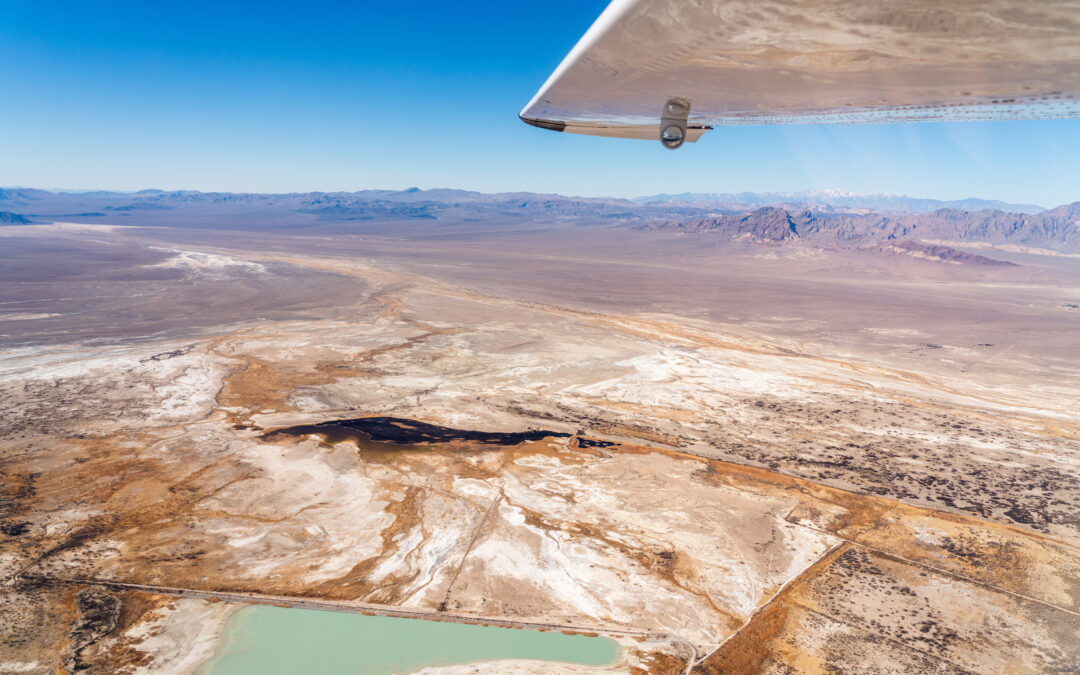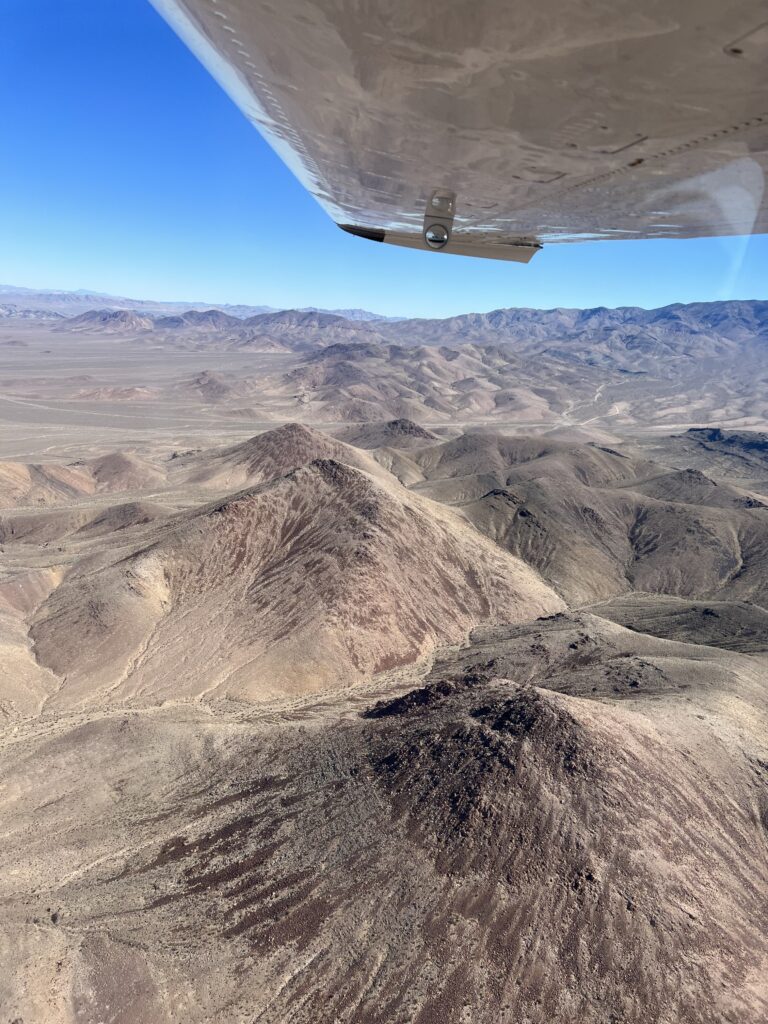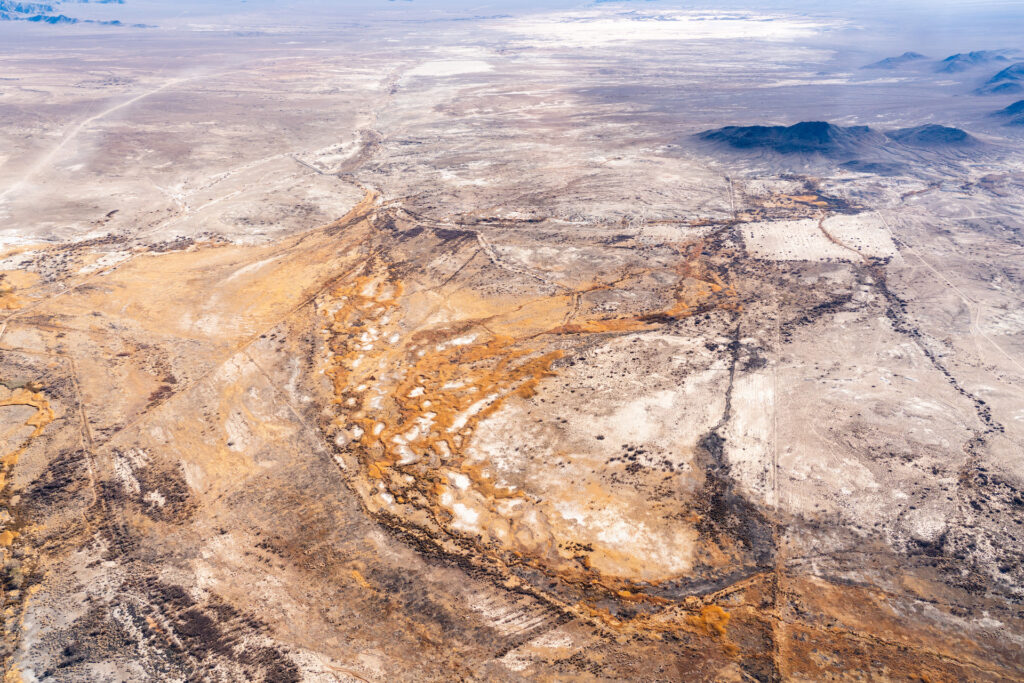
Early in the morning on Saturday, March 12th, individuals working and living in the Amargosa Basin and Death Valley region met at Calvada Meadows Airport near Pahrump, NV. The morning shown bright and windless: ideal conditions for flying in a single-engine Cessna 210 propellor plane.
Bruce Gordon — the plane’s pilot and founder of EcoFlight — had just finished adding fuel to the tanks when the groups began to arrive. EcoFlight is an organization that educates and advocates for the protection of remaining wild lands and wildlife habitat using small aircraft. By providing an aerial perspective of the landscape, EcoFlight strives to encourage an environmental stewardship ethic among citizens of all ages. EcoFlight commonly partners with organizations like the Amargosa Conservancy to plan flights designed to teach elements of the natural history and ecology of the landscape while also identifying threats to habitat and natural resources on the ground.
The group would be divided into two flights, each containing 5-6 individuals ranging from land managers to business owners to members of the media. The purpose of the day’s flights would be to tour the northern portion of the Amargosa Basin near the headwaters of the Amargosa River. The flights would head north out of Pahrump towards Beatty, NV, fly over the historic Bullfrog Hills, view the twin headwaters of the Amargosa River near 7J Ranch, turn south over the Amargosa Narrows and above the proposed solar zones in Amargosa Valley, and fly over Ash Meadows National Wildlife Refuge and Carson Slough before returning to Pahrump.
AC board members and staff provided interpretative guidance throughout both flights by speaking to the complex hydrology of the Amargosa Basin, which is far easier to grasp from a bird’s eye view. Through the windows of the plane, participants could observe the alluvial fans and drainages descending from the Spring Mountains and neighboring ranges into the Pahrump and Amargosa Valleys. From this aerial perspective, the Amargosa River reveals itself plainly as a major underground waterway coursing through the desert. Springs enfolded in lush vegetation appear in stark contrast to the xeric craggy mountains. Cerulean pools shimmer like gemstones in the Ash Meadows Wildlife Refuge. Mt. Charleston and Telescope Peak loom like islands of snow far above the arid valley floors. From above, the scale and significance of the Amargosa Watershed in one of the harshest desert climates on Earth is all but undeniable.

But a significant purpose of these EcoFlights is also to illustrate the diverse array of development projects that pose serious threats to the groundwater in this region. From the seat of a Cessna 210, the proximity of Yucca Mountain proposed nuclear repository to the Amargosa headwaters is startling. The potential impacts of proposed open pit gold mining in the Bullfrog Hills on the springs that supply both the river and the town of Beatty with precious groundwater is hyper apparent. In the Amargosa Valley, the distance between the commercial dairy operations and spring pools that contain some of the rarest and most endangered fish on the planet is anxiety inducing. And nearly everywhere in between, the prospect of large-scale solar arrays that rely on vast amounts of water to suppress dust make the ribbons of water that form the river feel extremely vulnerable.
The Amargosa River is home to some of the most unique and rare wildlife in the world, all of which depend on the continued flow of groundwater through the watershed in order to survive. Impacts to the water table through groundwater pumping and development projects pose a risk not only to species such as the Amargosa Toad, the Devils Hole Pupfish, and the Amargosa Niterwort living in the northern Basin, but also to every downstream species. Groundwater pumping in the Pahrump Valley has already significantly reduced flows to high-elevation springs across the California state line leading to habitat decline. The multitude of water-intensive development projects in the northern Amargosa Basin poses an existential threat to one of the most remarkable wetland ecosystems remaining on Earth.
As each flight touched wheels back on the runway of Calvada Meadows Airport, participants climbed out of the plane in various states of awe and concern. This seems to be the unique admixture of feelings that EcoFlight strives to evoke in its participants: awe of the beauty and complexity of the landscape, and deep concern for its enduring integrity. This mix of feelings is the foundation for purpose-driven conservation in the 21st century.
We are grateful to Bruce Gordon and all the staff at EcoFlight for making this unforgettable experience possible for the AC and our participants.
While you’re here, please consider joining our newsletter and donating to the Amargosa Conservancy by visiting this link. Our work of advocating for the sustainable future of the Amargosa River is more important than ever!
